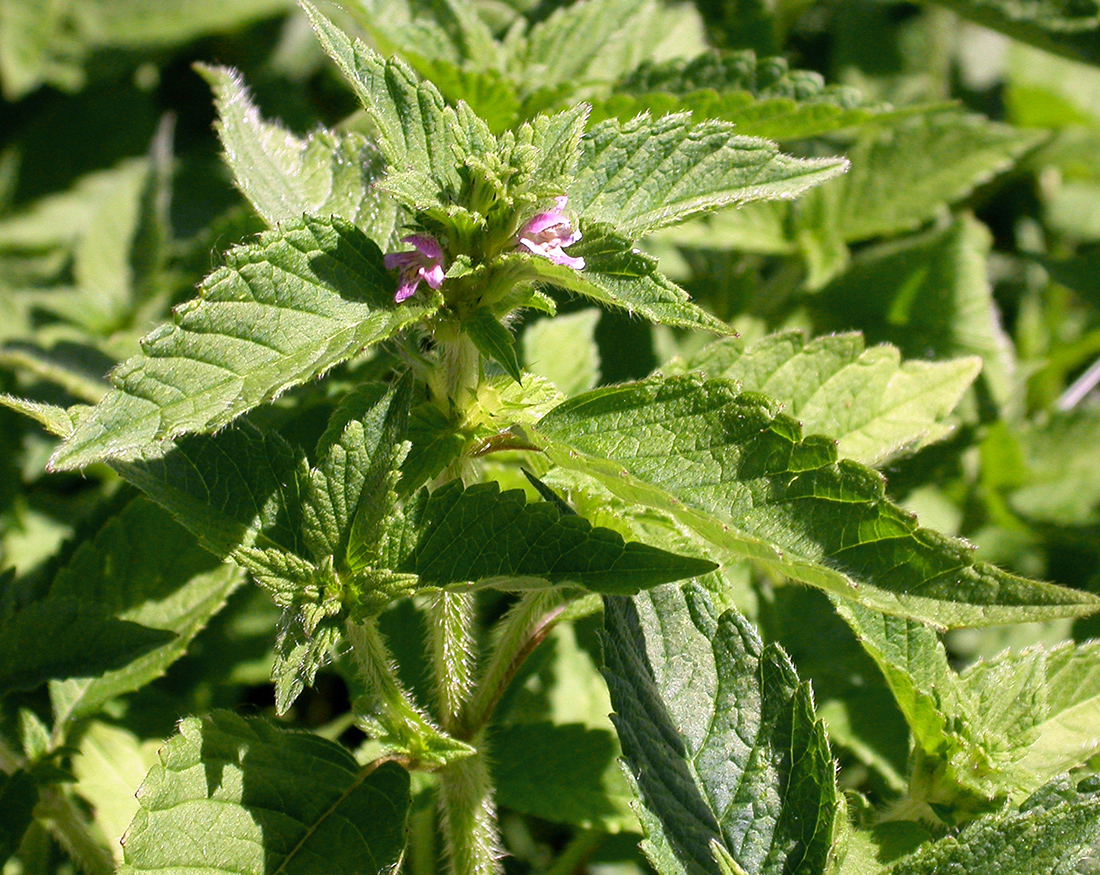Hemp-nettle
- Mint (Lamiaceae family):
- Galeopsis tetrahit L.
- EPPO code:
- GAETE
- Other names:
- Bee nettle, dog nettle, flowering nettle
Species information
- Lifecycle:
- Annual.
- Propagation:
- Reproduces by seed.
- Emergence:
- Hemp-nettle is a very early germinating species.
- Habitat:
- It can be found throughout the province, but is most commonly found in cereal crops in central and northern Ontario.
- Competitiveness:
- The plant’s impact is greatest on cereal crops where significant yield losses have been observed. Due to its early germination pattern, hemp-nettle is often controlled by tillage or pre-plant herbicide applications.
Identification clues
Seedling
- Cotyledons:
- Orbicular with basal points (two small auricles pointing backwards) 5–15 mm long.
- First leaves:
- Oval to elongated, densely hairy with toothed margins and prominent veins.
- Mature leaves:
- Mature leaves have an opposite leaf orientation. They are oval with a “stretched out” tip, and hairy with toothed margins and prominent veins.
Mature plant
- Stems:
- Hemp-nettle’s stem is erect, branched, square and covered with coarse, downward- pointing hair.
- Flowers:
- Flowers appear in dense clusters in the leaf axils, and they have irregular-shaped, pinkish white to purple petals, which make them look somewhat like miniature snapdragon flowers.
- Seeds:
- Each flower has four, egg-shaped seeds located in the base of a tubular receptacle.
- Roots:
- Taproot with branched, lateral roots.
Often mistaken for
I know it's not Hairy galinsoga because hemp-nettle has cotyledons with basal points, a square stem and irregular- shaped, pinkish-white to purple flowers compared to the round stem of hairy galinsoga with its small, yellow and white flower head.





Updated: January 13, 2023
Published: January 13, 2023